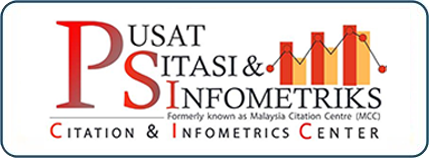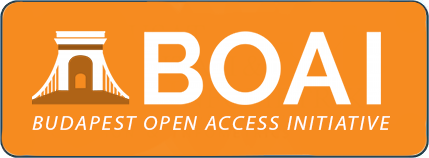Gerakan Asas Senaman Tua (ST) Melayu bagi Meningkatkan Kesihatan Am
DOI:
https://doi.org/10.33102/sainsinsani.vol9no2.610Keywords:
Senaman Tua Melayu, Seni Persilatan, Budaya, Kesihatan AmAbstract
Abstrak: Senaman Tua (ST) Melayu merupakan sebahagian daripada seni persilatan Melayu yang diwarisi sejak turun temurun dalam budaya istana Melayu khususnya istana Pahang. Pengasasnya iaitu Azlan Ghanie Jumat telah membuat inovasi dalam senaman hasil daripada pengamalan keluarganya serta pengalaman beliau sendiri dalam dunia seni mempertahankan diri. Terdapat beberapa gerakan asas dalam Senaman Tua yang telah diperkenalkan kepada masyarakat umum sebagai latihan fizikal atau amalan kecergasan. Makalah ini akan membincangkan berkaitan gerakan-gerakan asas Senaman Tua tersebut berserta kebaikannya kepada pengamalnya. Kajian ini menggunakan pendekatan kualitatif dan pengumpulan data dibuat melalui pemerhatian ikut serta dan temu bual informan penting. Seterusnya data dianalisis secara deskriptif dan interpretif bagi menjelaskan satu persatu gerakan asas Senaman Tua serta manfaat mengamalkannya. Hasil kajian mendapati bahawa terdapat 12 gerakan asas Senaman Tua yang telah diperkenalkan oleh pengasasnya iaitu Nafas Melayu, Sedap Badan, Angkat Tiang Layar, Senaman Mandi, Mata Angin, Gulung Ekor Naga, Tarik Pusat Tengah, Dayung Sampan, Selangkah Guru, Kemas Badan, Tarik Timba dan Tegak Panah. Melalui latihan secara konsisten, pengamal dapat meningkatkan stamina serta dapat membantu menyelesaikan masalah kesihatan luaran dan dalaman. Dalam masa yang sama, setiap gerakan Senaman Tua sarat dengan petua, adab dan adat orang Melayu. Justeru itu, Senaman Tua perlu disebarluaskan di peringkat global sebagai pemangkin kecergasan dan secara tidak langsung dapat memartabatkan salah satu budaya orang Melayu.
Abstract: Senaman Tua (ST) Melayu is part of the Malay martial art that has been passed down from generation to generation in the culture of the Malay palace, especially the Pahang palace. Its founder, Azlan Ghanie Jumat, has made innovations in exercise based on his family’s practice as well as his own experience in the world of martial arts. Some basic movements in Senaman Tua have been introduced to the public as physical exercises or fitness practices. This paper will discuss the basic movements of the Senaman Tua along with its benefits to its practitioners. This study uses a qualitative approach and data collection is done through participant observation and key informant interviews. Next, the data is analyzed descriptively and interpretively to explain one by one the basic movements of Senaman Tua and the benefits of practicing them. The results of the study found that there are 12 basic movements of Senaman Tua that have been introduced by the founder, namely Nafas Melayu, Sedap Badan, Angkat Tiang Layar, Senaman Mandi, Mata Angin, Gulung Ekor Naga, Tarik Pusat Tengah, Dayung Sampan, Selangkah Guru, Kemas Badan, Tarik Timba and Tegak Panah. Through consistent training, practitioners can increase stamina and can help in solving external and internal health problems. At the same time, every movement of Senaman Tua is loaded with Malay tips, manners, and customs. Therefore, Senaman Tua Melayu needs to be disseminated at the global level as a catalyst for fitness and can indirectly dignify one of the cultures of the Malays.
Downloads
References
Azlan Ghanie. (2007). Senaman Tua Melayu. Azlan Ghanie (M) Sdn Bhd.
Azlan Jumat Abdul Ghanie. (2019, 27 Jun & 2020, 22 Februari) Pengasas Senaman Tua Melayu dan Silat Keris Lok 9. [Temu Bual].
Bailey, R. (2015). The therapeutic effects of Tai Chi on adults 55 and older with arthritis. (Publication No. 1586786). [Master thesis, North Carolina Central University]. ProQuest Dissertations Publishing.
Berg, A. V. D. & Berg, M. S. (2017). Guidelines for Researchers Using an Adapted Consensual Qualitative Research Approach in Management Research. The Electronic Journal of Business Research Methods, 15(2), 109-119.
Blumenthal, J. A., Emery, C. F., Madden, D. J., George, L. K., Coleman, R. E., Riddle, M. W & Williams, R. S. (1989). Cardiovascular and Behavioral Effects of Aerobic Exercise Training in Healthy Older Men and Women. Journal of Gerontology: Medical Sciences, 44(5), 147–157. https://doi.org/10.1093/geronj/44.5.M147
Bryman, A. (2004). Social Research Methods. 2nd ed. Oxford University Press.
Chang, D. G., Holt, J. A., Sklar, M. & Groessl, E. J. (2016). Yoga as a treatment for chronic low back pain: A systematic review of the literature. J Orthop Rheumatol, 3(1) 1-8.
Creswell, J. W. (2014). Research Design Qualitative, Quantitative and Mixed Methods Approaches. 4th ed. Sage Publications Inc.
Dzulkhairi Yusoff. (2020, 22 Februari). Jurutera Mekanikal dan Pengamal Senaman Tua [Temu Bual].
Ernst, E. (2000). The role of complementary and alternative medicine. British Medical Journal, 321(7269), 1133–1135.
Grotle, M. & Hagen, K. B. (2018). Yoga classes may be an alternative to physiotherapy for people with chronic nonspecific low back pain. Journal of Physiotherapy, 64(1), 57-66. https://doi.org/10.1016/j.jphys.2017.11.001
Hall, A., Copsey, B., Richmond, H., Thompson, J., Ferreira, M., Latimer, J., & Maher, C. G. (2017). Effectiveness of tai chi for chronic musculoskeletal pain conditions: updated systematic review and meta-analysis. Physical Therapy, 97(2), 227–238. https://doi.org/10.2522/ptj.20160246
Hartfiel, N., Clarke, G., Havenhand, J., Philips, C. & Edwards, R. T. (2017). Cost-effectiveness of yoga for managing musculoskeletal conditions in the workplace. Occupational Medicine, 67, 687–695. https://doi.org/10.1093/occmed/kqx161
Haswandi Hasmoon. (2020, Februari 22 Februari). Jurulatih Sukan dan Jurulatih Senaman Tua. [Temu Bual].
Highland, K. B., et.al. (2018). Benefits of the Restorative Exercise and Strength Training for Operational Resilience and Excellence Yoga Program for Chronic Low Back Pain in Service Members: A Pilot Randomized Controlled Trial. Archives of Physical Medicine and Rehabilitation, 99(1), 91–98. https://doi.org/10.1016/j.apmr.2017.08.473
Huston, P. & McFarlane, B. (2016). Health benefits of tai chi: What is the evidence? Canadian Family Physician, 62(November), 881–890. http://www.cfp.ca/content/62/11/881.short
Jeyamalar Rajadurai, Robaayah Zambahari, Abdul Rashid ABdul Rahman & Anwar Suhaimi. (2017). Clinical Practice Guidelines on Primary & Secondary Prevention of Cardiovascular Disease 2017. Ministry of Health Malaysia.
Kamarul Azmi Jasmi, Mohd Imran Mahamad Remli & Wan Ezril Wan Ibnurushdi. (2015). Mahasiswa dan Aktiviti Kesukanan. Dlm. Mahasiswa dan Kehidupan Menurut Perspektif Islam: Penampilan, Kesihatan, dan Aktiviti Sosial. Jilid III (pp. 45-66). Penerbit UTM Press.
Kementerian Kesihatan Malaysia. (2001). Kempen Cara Hidup Sihat 2001 Manual Mesej Utama dan Sokongan Promosi Keluarga Sihat. Bahagian Pendidikan Kesihatan Kementerian Kesihatan Malaysia.
Lauche, R., Langhorst, J., Dobos, G., & Cramer, H. (2013). A systematic review and meta-analysis of Tai Chi for osteoarthritis of the knee. Complementary Therapies in Medicine, 21(4), 396–406. https://doi.org/10.1016/J.CTIM.2013.06.001
Mason, H., Schnackenberg, N., & Monro, R. (2017). Yoga and Healthcare in the United Kingdom. International Journal of Yoga Therapy, 27(1), 121–126. https://doi.org/10.17761/1531-2054-27.1.121
Mohd Fadli Adha Mohamad Rashid. (2020, 14 Mac). Jurulatih Sukan dan Jurulatih Senaman Tua. [Temu Bual].
Muhammad Takari. (2013). Kesenian Melayu: Kesinambungan, Perubahan, dan Strategi Budaya. Universiti Sumatera Utara.
Ravi, S. (2016). The Application and Effectiveness of Yoga in Prevention and Rehabilitation of Sport Injuries in Athletes Participating in Competitive Sport. LASE Journal of Sport Science, 7(1), 42–57.
Ros Aiza Mohd Mokhtar, Adibah Sulaiman, Mohd Azmir Mohd Nizah, Hishomudin Ahmad, Hanis Hidayu Kasim, Sharifah Najwa Syed Mohamad & Fathima Begum Syed Mohideen. (2024). How Does Alternative Treatment Through Traditional Malay Exercise Good for General Health?. Sains Insani, 9(1), 47-55. https://doi.org/10.33102/sainsinsani.vol9no1.587
Ros Aiza Mohd Mokhtar, Mohammad Aizuddin Abdul Aziz & Adibah Sulaiman. (2021). Senaman Tua Melayu bagi Memelihara Kesihatan Wanita dalam Mendepani Revolusi Industri. Dlm. Siti Nor Azhani Mohd Tohar et. al., Teras Ilmu Memacu Revolusi Industri (pp.176-192). Universiti Sains Islam Malaysia.
Salihah Yusoff, Siti Aishah Hassan, and Wan Norhayati Wan Othman. (2019). Traditional and Complementary Treatments among Malay, Chinese and Indian Chronic Diseases: A Systematic Review. Malaysian Journal of Medicine and Health Sciences, 15,178-183.
Salwa Yunus. (2020, 14 Mac). Akauntan dan Pengamal Senaman Tua. [Temu Bual].
Sareen, S. & Kumari, V. (2006). Yoga for rehabilitation in chronic pancreatitis. Gut, 55(7), 1051-1059. https://doi.org/10.1136/gut.2006.093088
Yang, Y. L. et al. (2018). The Effect of Tai Chi on Cardiorespiratory Fitness for Coronary Disease Rehabilitation: A Systematic Review and Meta-Analysis. Frontiers in Physiology, 8(JAN), 1–10. https://doi.org/10.3389/fphys.2017.01091
Zalina Ibrahim. (2020, 11 Mac). Pengusaha Spa dan Jurulatih Senaman Tua. [Temu Bual].
Downloads
Published
How to Cite
Issue
Section
License
Copyright (c) 2024 Ros Aiza Mohd Mokhtar, Adibah Sulaiman, Sharifah Najwa Syed Mohamad, Fathima Begum Syed Mohideen, Latifah Mustafa

This work is licensed under a Creative Commons Attribution 4.0 International License.
1. Author holds the copyright of the article.
2. Jurnal Sains Insani owns the rights to publish the article. The writer may request permission to republish the article from the editor.
3. Jurnal Sains Insani follows the APA (American Psychological Association) style for all in-text citation and list of bibliographies.











